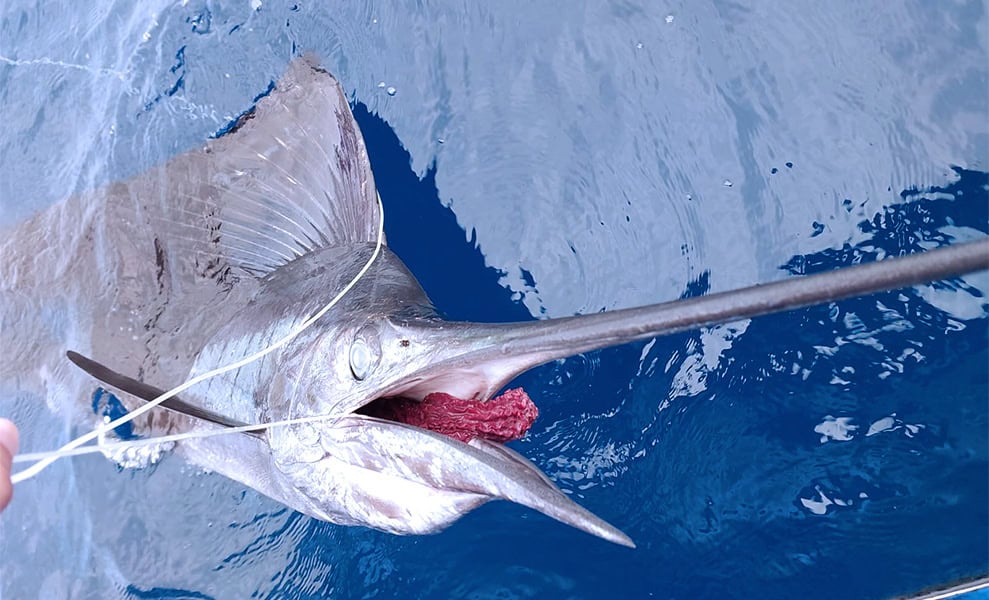The Southern Zone Sport Fishing Council revealed that dozens of sailfish and marlin were found dead in Golfo Dulce waters. Members of the Council denounce that these deaths are evidence of the illegal live bait fishing activity that is occurring at an accelerated pace in the South Pacific.
Illegal live bait fishing is subject to regulations that limit its use in the area. Nevertheless, for the past six years, the exponential increase in commercial boats and launches engaging in this illegal activity has been documented with videos and photographs, threatening the preservation of protected species such as marlin and sailfish.
“We have had multiple approaches with the Coast Guard team and various responsible institutions such as INCOPESCA, but we have not obtained any results. Last week, various members of the Southern Zone Sport Fishing Council, which consists of a broad group of entrepreneurs and fishermen, held the first meetings with different legislators in the Legislative Assembly to expose and denounce this issue and request concrete measures to strengthen controls and regulations around this activity,” said Diego Camacho, spokesman for the Southern Zone Sport Fishing Council.
The group also requested increased surveillance and more severe penalties for those who break the law. Marlin and sailfish species are used as bait to attract sharks and then sold on the market at a very low price. Paradoxically, for ecosystems and the economic reactivation of the country, sailfish and marlin have high tourist value for sport and recreational fishing.
In 2019 alone, sport fishing associated with the capture of sailfish and other species of interest generated the visitation of 150,000 tourists and 33,000 jobs, of which 13,000 are direct.
Additionally, this sector registered 672 boats, generating ₡125 million (about ($225,000) in licenses and ₡187 million (around $336,000) in permits, according to data from INCOPESCA and the Costa Rican Tourism Institute.
Longline and live bait fishing activities have been identified within the first 30 miles off the coast in front of Golfo Dulce. The current legislation states in Article 5: “In the areas outside the areas created in subsections a, b, and c of Article 4 of this regulation, in an area delineated by an imaginary line parallel to the coast from the high tide line to 30 miles offshore in the Pacific Ocean of Costa Rica, commercial fishing operations using surface longline (Long line) with live bait as fishing gear are prohibited for commercial, small-scale, medium-scale, and advanced fishing fleets as it will be considered directed fishing for sailfish.”
In the words of Congressman Manuel Morales, “this June highlights the importance of protecting our oceans, especially in a country like Costa Rica known for its commitment to sustainability and biodiversity. However, the permissiveness towards practices like illegal live bait fishing is a concerning contradiction and challenges the image Costa Rica aims to project to the world.”
The national fishing structure and governance require urgent comprehensive attention for the benefit of both fishermen and the species that need protection due to their important role in the ecosystem. Effective ocean management in Costa Rica also deserves a multidisciplinary approach and the collaboration of various entities such as INCOPESCA, SINAC, MINAE, the MAG, and the Ministry of Public Works and Transport to ensure more complete and balanced decision-making,” concluded Congressman Morales.








